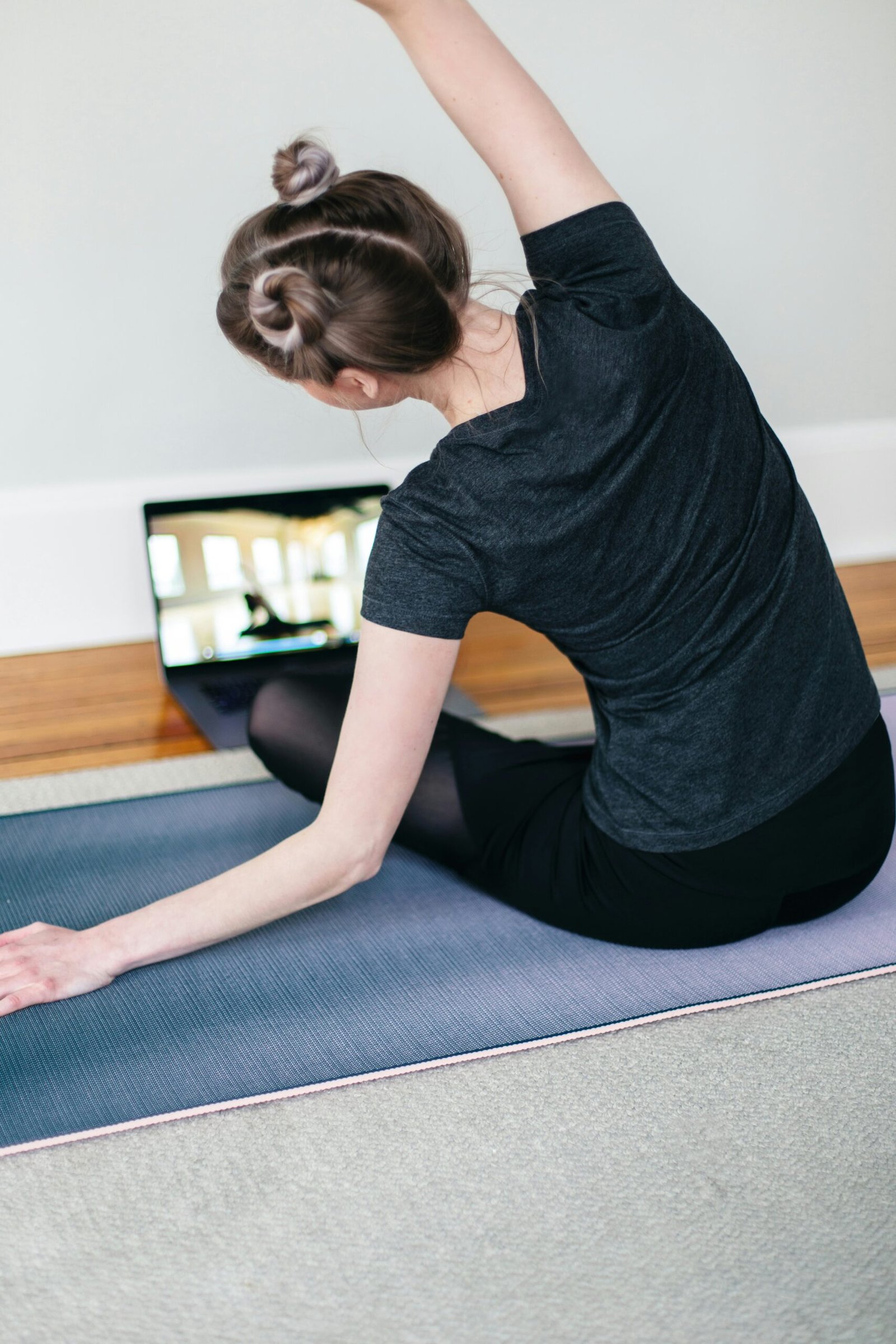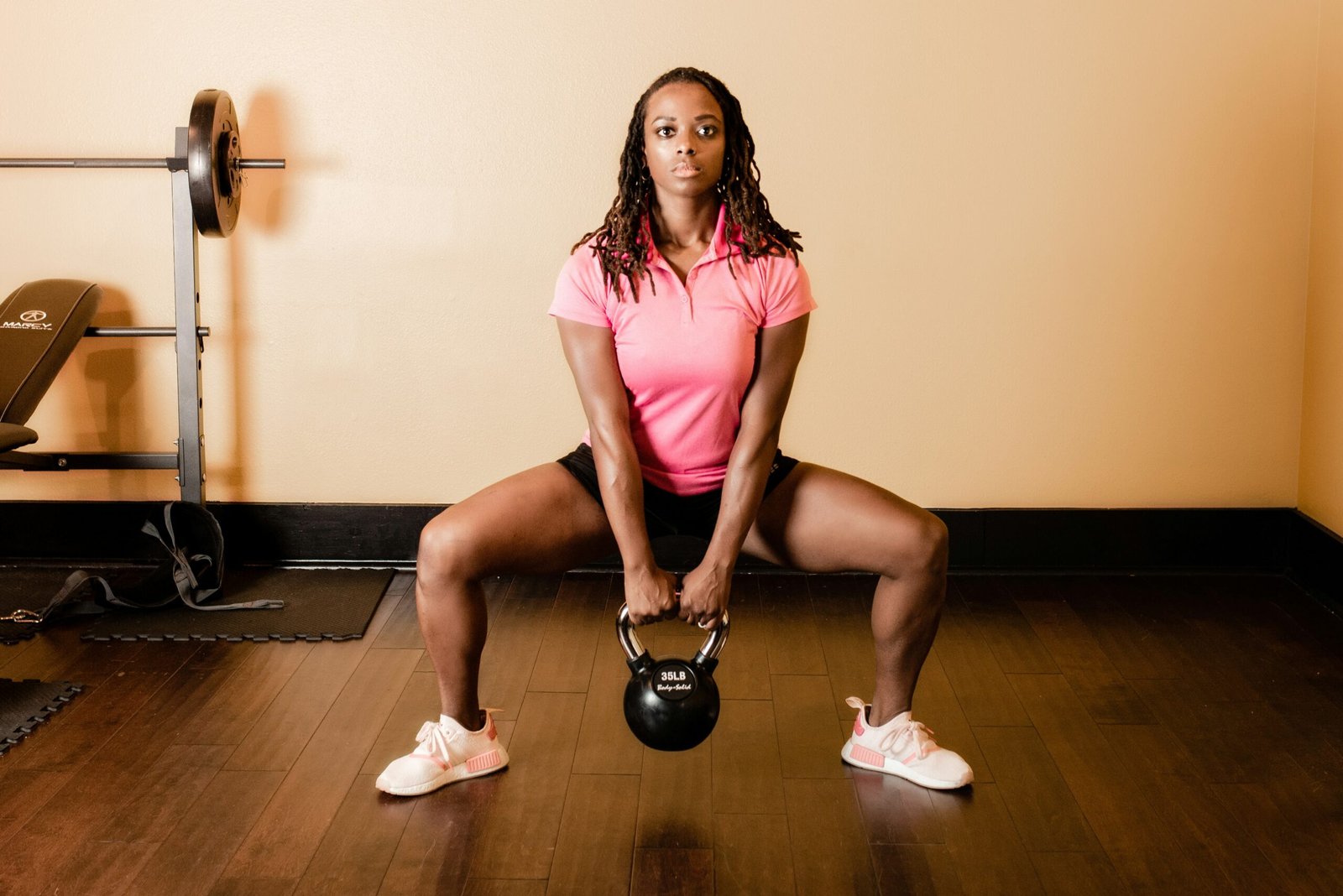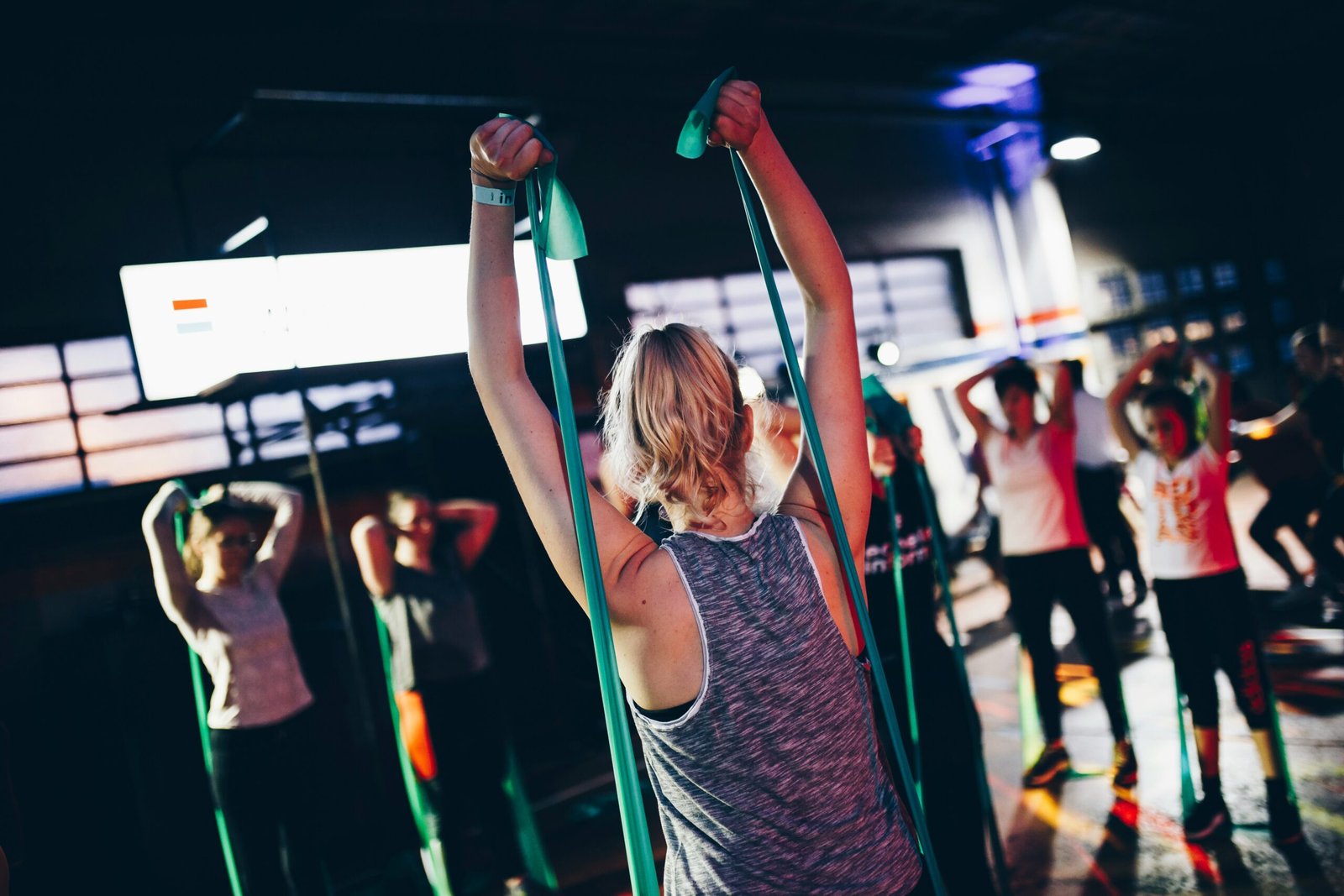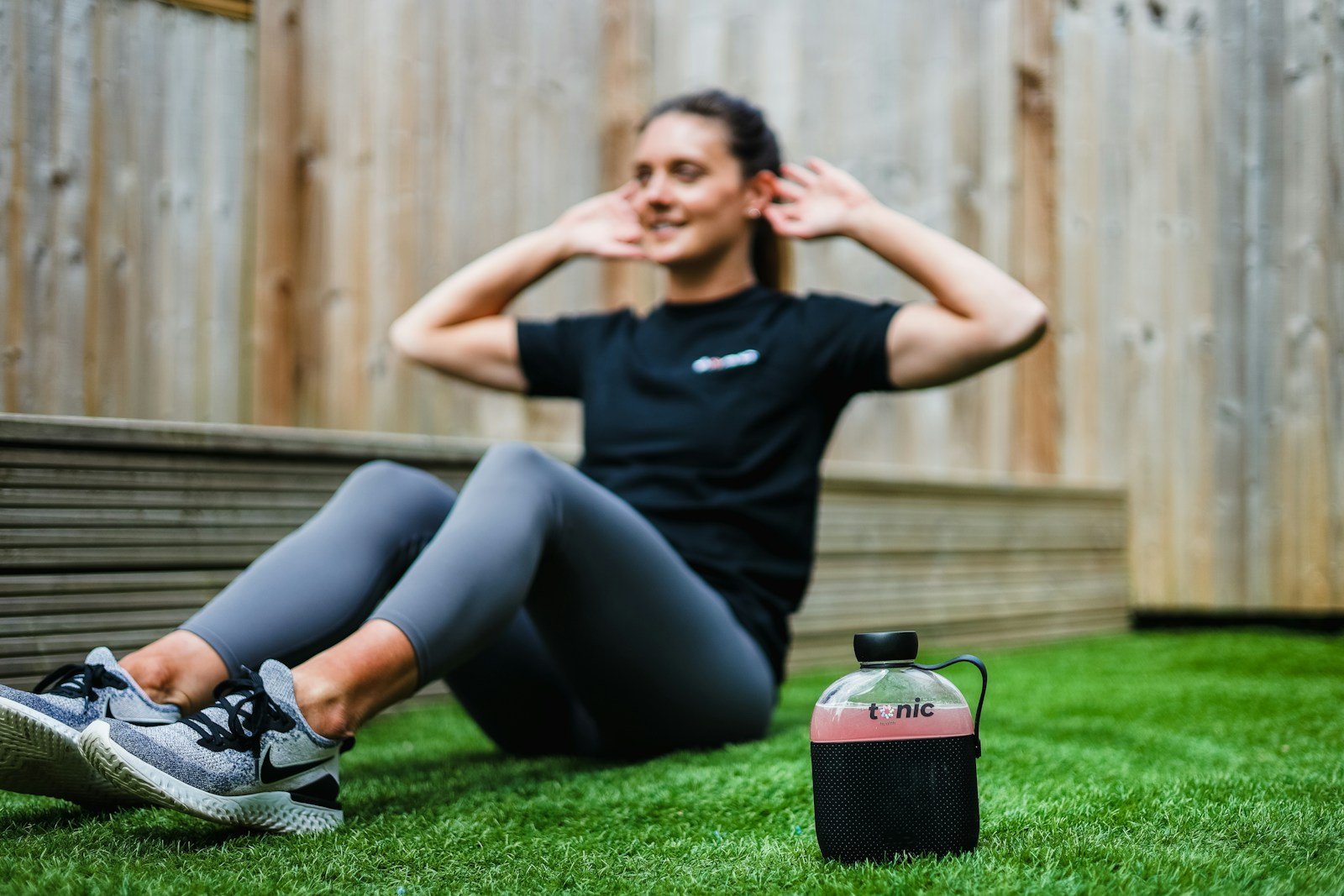Introduction to Pilates
Pilates, a form of low-impact exercise, was developed by Joseph Pilates in the early 20th century. Originally designed for rehabilitation purposes, it has evolved into a popular fitness regimen known for its emphasis on controlled movements, core strength, flexibility, and a strong mind-body connection. This holistic approach makes Pilates an effective workout for those aiming to burn fat and achieve a lean physique.
The core principles of Pilates are centered around concentration, control, precision, breath, and flow. Each movement is performed with a high level of focus and control, ensuring that the muscles are engaged effectively and safely. This not only helps in enhancing muscle tone and strength but also promotes better posture and alignment.
One of the key aspects that sets Pilates apart from other forms of exercise is its focus on the core, often referred to as the “powerhouse” of the body. By targeting the muscles in the abdomen, lower back, hips, and glutes, Pilates workouts help to build a strong and stable foundation. A strong core is essential for performing everyday activities with ease and can significantly reduce the risk of injuries.
Flexibility is another critical component of Pilates. The exercises are designed to stretch and lengthen the muscles, improving overall flexibility and range of motion. This not only enhances athletic performance but also contributes to a more graceful and balanced physique.
The mind-body connection in Pilates is fostered through mindful breathing and concentration. This helps to reduce stress and improve mental clarity, making the workout not just beneficial for the body but also for mental well-being. By incorporating deep, controlled breaths, practitioners can ensure that each movement is executed with precision and efficiency.
Overall, Pilates is an effective way to burn fat and achieve a lean body. Its unique combination of core strengthening, flexibility, and mindful movement ensures a comprehensive workout that targets multiple aspects of physical fitness. Whether you are new to fitness or looking to enhance your current routine, incorporating Pilates workouts can help you reach your fitness goals.
Benefits of Pilates for Fat Burning
Pilates, a low-impact form of exercise, offers numerous benefits for those aiming to burn fat and achieve a leaner physique. One of the core advantages of a Pilates workout lies in its unique combination of strength training, muscle toning, and cardiovascular elements, all of which contribute to increased metabolism and calorie burning. This multifaceted approach makes Pilates an effective tool for fat loss.
Strength training is a significant component of Pilates. By engaging in exercises that focus on muscle resistance, individuals can build lean muscle mass. Lean muscle is metabolically active tissue, meaning it requires more energy to maintain than fat. As a result, the body burns more calories even at rest, which ultimately aids in fat reduction. This process is supported by a study published in the Journal of Strength and Conditioning Research, which found that participants who engaged in regular Pilates workouts experienced significant increases in muscle mass and metabolic rate.
In addition to strength training, Pilates emphasizes muscle toning. Through controlled, precise movements, Pilates targets specific muscle groups, enhancing muscle definition and endurance. This type of exercise not only sculpts the body but also improves muscular balance and coordination. When muscles are toned and more defined, the body appears leaner and more sculpted, contributing to a decrease in overall body fat percentage.
Moreover, Pilates incorporates cardiovascular elements, which are essential for burning calories and promoting heart health. While traditional cardiovascular exercises like running or cycling may seem more intense, the sustained, moderate-intensity movements in a Pilates workout can still provide substantial cardiovascular benefits. As reported by the American Council on Exercise, Pilates can elevate the heart rate to a level that supports cardiovascular conditioning and calorie expenditure, making it a viable option for those looking to lose fat.
Expert opinions also highlight the effectiveness of Pilates in fat burning. Renowned fitness professionals often advocate for its inclusion in a well-rounded fitness regimen due to its holistic approach. By combining aspects of strength, endurance, and cardiovascular fitness, Pilates creates an environment conducive to efficient fat burning and overall physical improvement.
Pilates and Core Strength
Core strength is a foundational element of the Pilates workout, playing a crucial role in achieving a leaner body. The core, often referred to as the “powerhouse” in Pilates terminology, encompasses the abdominal muscles, obliques, and lower back. By focusing on these areas, Pilates exercises help build a strong and stable core, which is essential for overall body strength and balance.
In a typical Pilates workout, a variety of core exercises are employed to target different muscle groups within the core. For instance, exercises like the Hundred, Roll-Up, and Criss-Cross are designed to engage the abdominal muscles intensely. These exercises not only aid in toning the abs but also enhance endurance and flexibility. The obliques, which are the muscles located on the sides of the abdomen, are targeted through twisting movements such as the Saw and the Oblique Roll-Back. These exercises help in sculpting the waist and improving rotational strength.
Lower back strength is equally emphasized in Pilates workouts. Exercises such as the Swan and the Swimming are designed to strengthen the lower back muscles, promoting better stability and support for the spine. A strong lower back is essential for maintaining proper posture and reducing the risk of back injuries.
Beyond the physical benefits, a strong core also contributes to improved posture. Pilates encourages mindful movements and proper alignment, which help in correcting postural imbalances. As the core muscles become stronger, they provide better support to the spine, leading to a more upright and confident posture. Improved posture not only enhances physical appearance but also contributes to overall well-being by reducing strain on the body and preventing discomfort.
Incorporating a Pilates workout into your fitness routine can significantly enhance core strength, leading to a leaner, more toned physique. The focus on controlled, precise movements ensures that each exercise is performed with maximum efficiency, making Pilates a highly effective method for developing a strong and stable core.
Pilates Exercises for Fat Burning
The Pilates workout is renowned not only for enhancing flexibility and core strength but also for its effectiveness in burning fat and sculpting a lean physique. Below are some specific Pilates exercises that are particularly beneficial for fat burning. By integrating these exercises into your routine, you can maximize your fat-burning potential while improving overall body conditioning.
The Hundred
The Hundred is a classic Pilates exercise that engages your core and increases your heart rate, making it excellent for fat burning. To perform the Hundred, lie on your back and lift your legs to a tabletop position. Extend your arms by your sides and lift your head, neck, and shoulders off the mat. Begin pumping your arms up and down while inhaling for five counts and exhaling for five counts. Aim for 10 sets of 10 pumps, totaling 100 pumps. This exercise not only targets the abdominal muscles but also helps to improve circulation and endurance.
Criss-Cross
Criss-Cross is another effective Pilates workout for fat burning, focusing on the obliques and waistline. Start by lying on your back, hands behind your head, and legs lifted in a tabletop position. Lift your head, neck, and shoulders off the mat, and twist your torso to bring your right elbow towards your left knee while extending your right leg. Alternate sides in a bicycle-pedaling motion. Perform 15-20 repetitions on each side. This exercise not only tones the obliques but also engages the entire core, enhancing metabolic rate and fat loss.
Plank Variations
Plank variations are integral to a fat-burning Pilates workout, as they engage multiple muscle groups and boost calorie expenditure. The basic plank involves holding a push-up position with your body in a straight line from head to heels, engaging your core, glutes, and legs. Aim to hold the plank for 30-60 seconds. For added intensity, try side planks or dynamic planks, such as alternating lifting each leg or tapping your shoulders. These variations increase muscular endurance and promote fat loss by challenging stability and core strength.
Incorporating these targeted Pilates exercises into your fitness regimen can help you burn fat more effectively while building a strong, lean body. Remember to focus on proper form and controlled movements to maximize the benefits of each exercise.
Incorporating Cardio into Your Pilates Routine
Integrating cardiovascular elements into your Pilates workout is essential for maximizing fat burning and achieving a lean physique. While traditional Pilates focuses on core strength, flexibility, and muscle tone, adding cardio can elevate your heart rate, enhance caloric expenditure, and boost overall fitness levels.
One effective method to incorporate cardio into your Pilates workout is through interval training. This technique alternates between high-intensity exercises and low-intensity recovery periods. For instance, you can perform a series of high-energy movements like jumping jacks or burpees in between your Pilates exercises. These bursts of activity not only increase your heart rate but also keep your metabolism elevated, facilitating greater fat loss.
Combining Pilates with other cardio activities, such as running or cycling, can also be highly beneficial. You might start your workout with a 20-minute jog or a session on the stationary bike to get your heart pumping, followed by a Pilates routine to strengthen and tone your muscles. This hybrid approach ensures that you’re working both your cardiovascular system and your muscular endurance.
Certain Pilates exercises inherently incorporate cardio components, making them excellent additions to your routine. The “Pilates Jumpboard” exercise, for example, uses a jumpboard attachment on the reformer machine to simulate a low-impact jumping motion. This exercise is fantastic for cardio conditioning while maintaining the core-strengthening benefits of Pilates. Similarly, the “Mountain Climber” exercise, typically performed on a mat, involves a rapid alternating knee drive that elevates the heart rate and engages multiple muscle groups simultaneously.
By thoughtfully integrating cardiovascular elements into your Pilates workout, you can create a comprehensive fitness regimen that not only burns fat but also enhances overall strength and flexibility. This balanced approach helps you achieve a leaner, fitter body while enjoying the holistic benefits of Pilates.
Creating a Balanced Pilates Workout Plan
Designing a balanced Pilates workout plan is essential for achieving optimal results in strength, flexibility, and cardiovascular fitness. A well-structured plan ensures that all aspects of physical health are addressed, which is crucial for burning fat and getting lean. To begin, it’s important to integrate a variety of exercises that target different muscle groups and fitness components.
A typical week might look like this:
Sample Weekly Pilates Workout Schedule
Monday: Focus on core strength with exercises like the Pilates Hundred, Roll-Ups, and Planks.
Tuesday: Incorporate flexibility routines such as spine stretches, hamstring stretches, and shoulder bridge exercises.
Wednesday: Cardio Pilates, including dynamic movements like leg kicks, jumping jacks, and mountain climbers.
Thursday: Upper body strength with exercises like push-ups, tricep dips, and arm circles.
Friday: Lower body focus with squats, lunges, and leg lifts.
Saturday: A full-body session that combines elements from all previous days for a comprehensive workout.
Sunday: Rest or gentle stretching to allow muscles to recover.
Consistency is key in any fitness regimen, and Pilates is no exception. Aim to perform your Pilates workout at least three to four times a week, gradually increasing the intensity and duration as your body adapts. Start with basic exercises and, over time, incorporate more advanced movements and longer sessions to continue challenging your muscles.
Monitoring progress is also vital. Keep a journal of your workouts, noting any improvements in strength and flexibility, as well as changes in body composition. This will help you stay motivated and adjust your plan as needed.
Incorporating these guidelines into your Pilates routine will not only help you burn fat and get lean but also promote overall well-being and physical resilience.
Nutrition Tips to Complement Your Pilates Routine
Achieving fat loss and a lean physique is not solely dependent on your Pilates workout; nutrition plays a critical role as well. A balanced diet that is rich in essential nutrients can significantly enhance the effectiveness of your Pilates regimen, helping you to reach your fitness goals more efficiently.
First and foremost, it’s essential to consume a diet that includes a good balance of macronutrients: protein, healthy fats, and complex carbohydrates. Protein is fundamental for muscle repair and growth, which is crucial after a Pilates workout. Including sources such as lean meats, eggs, legumes, and dairy products can ensure that your muscles have the building blocks they need to recover and strengthen.
Healthy fats are another vital component of your diet. They provide long-lasting energy and support overall cellular function. Foods like avocados, nuts, seeds, and fish are excellent choices. These fats not only fuel your Pilates sessions but also help in the absorption of fat-soluble vitamins, which are necessary for overall health.
Complex carbohydrates are equally important as they offer a steady release of energy, which is essential during a Pilates workout. Whole grains, vegetables, fruits, and legumes should be your go-to sources. Unlike simple sugars, complex carbohydrates break down slowly, providing sustained energy without causing spikes in blood sugar levels.
Hydration is another critical aspect that should not be overlooked. Water supports every metabolic process in the body, including fat metabolism. Staying well-hydrated helps maintain energy levels, enhances physical performance, and aids in digestion. Aim for at least 8-10 glasses of water daily, and increase this amount if you are engaging in strenuous Pilates workouts.
Avoiding processed foods is equally important. These foods often contain unhealthy fats, sugars, and additives that can sabotage your fitness efforts. Instead, focus on whole, unprocessed foods that nourish your body and complement your Pilates workout. By making mindful dietary choices, you can maximize the benefits of your Pilates routine and work towards a leaner, healthier physique.
Success Stories and Testimonials
Pilates has long been celebrated for its ability to help individuals achieve a leaner, more toned physique. The real-life success stories of those who have embraced the Pilates workout are a testament to its effectiveness. One such inspiring individual is Sarah, a 32-year-old mother of two. Struggling with post-pregnancy weight, Sarah turned to Pilates and witnessed remarkable transformations. “Pilates not only helped me lose the baby weight, but it also strengthened my core and improved my overall posture,” she shares. Her before-and-after pictures show a noticeable reduction in her midsection and a more defined muscle tone.
Another compelling testimonial comes from Mark, a 45-year-old office worker who faced challenges with sedentary work life and weight gain. Mark’s commitment to a consistent Pilates regimen resulted in significant fat loss and enhanced muscle definition. “I started Pilates with the goal of losing weight, but I gained so much more. My flexibility and balance improved, and I feel more energetic throughout the day,” Mark explains. His journey underscores the holistic benefits of Pilates, extending beyond mere physical appearance.
Emily, a 28-year-old fitness enthusiast, also credits her lean and toned body to the Pilates workout. “I’ve tried various fitness programs, but nothing sculpted my body like Pilates. It’s a workout that targets every muscle group, and the results are undeniable,” Emily remarks. Her transformation pictures reveal the sculpted abs and toned legs she achieved through dedicated Pilates sessions.
These success stories offer compelling evidence of the transformative power of Pilates. They highlight how the Pilates workout can be a pivotal tool in achieving fat loss and a lean physique. As these testimonials reveal, Pilates not only sculpts the body but also enhances overall well-being, making it a highly recommended workout for anyone aiming for a healthier, fitter lifestyle.










